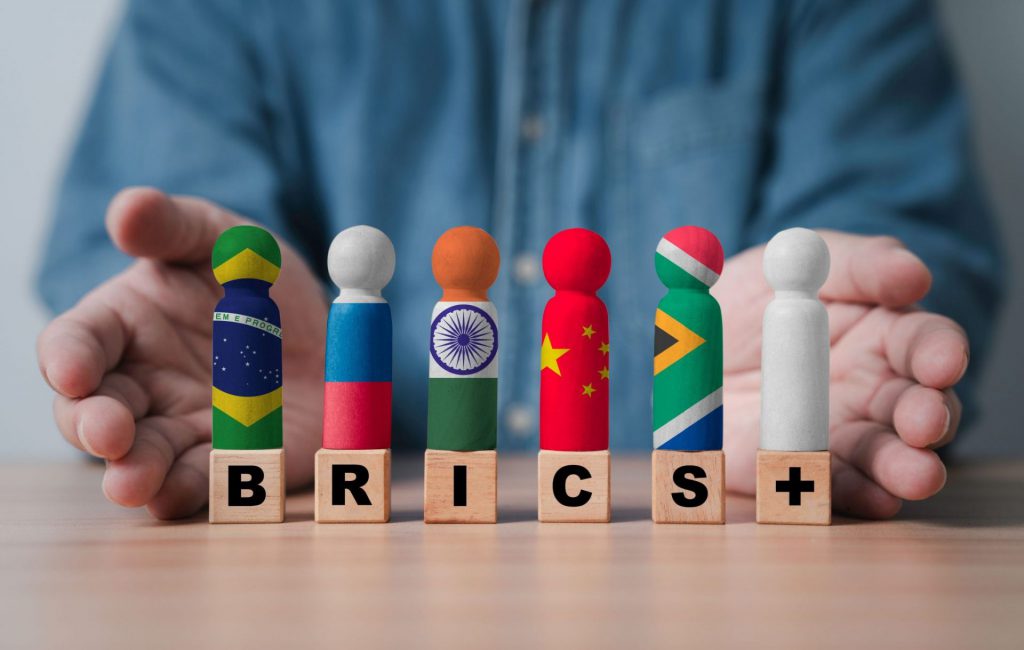BRICS Summit Exposes Cracks: Can the Bloc Survive Its Own Divisions?
The BRICS alliance—once hyped as the anti-Western financial Avengers—just showed more fractures than unity at its latest summit. Here’s why the bloc’s future looks murkier than a bear market.
Geopolitical Theater or Economic Powerhouse?
Leaders talked de-dollarization but delivered zero actionable plans. Another year, another ‘working group’ to study the problem. Meanwhile, the USD smirks from its 58% global reserve throne.
The Crypto Elephant in the Room
No mention of blockchain settlements or CBDC bridges—just recycled rhetoric about ‘alternative systems.’ Pro tip: wanting to disrupt the financial order doesn’t count unless you’ve got the tech to back it.
Closer: BRICS or Broken?
Until they move beyond photo ops and actually build infrastructure (looking at you, New Development Bank), this bloc will remain a hedge fund of ideas—all promise, no execution. Bonus cynicism: At least their indecision is bullish for Bitcoin.
BRICS Future, Currency Shift, and the Rise of a New Economic Order

Currency Divisions Expose Strategic Rifts
The BRICS future remains clouded by Lula’s controversial single currency proposal, which has been leveraging tensions with the United States since 2023 across multiple essential trade frameworks. Brazil is facing steep economic challenges right now amid trade frictions and also potential deportation issues that are optimizing remittances to families back home through various major economic channels.
Ambassador Xolisa Mabhongo, South Africa’s lead negotiator, had this to say:
Member states pioneered varying levels of commitment to de-dollarization 2025 efforts, with the group establishing for reducing dollar dependency in trade transactions across several key financial sectors. The emerging markets alliance instituted joint criticism of what they called “unjustified unilateral protectionist measures,” yet members continue separate negotiations with the TRUMP administration through numerous significant diplomatic channels.
Expansion Complicates Economic Coordination
The emerging markets alliance now includes Egypt, Ethiopia, Iran, Indonesia, and the UAE, representing about 40% of global GDP and roughly half the planet’s population across various major economic territories. Trade among the original BRICS nations engineered by an impressive 40% between 2021 and 2024 to reach $740 billion annually, according to International Monetary Fund data involving multiple essential market segments.
The bloc also architected ten partner countries including Belarus, Cuba, and Vietnam, which were developed for what officials call “ad hoc practical cooperation” through several key integration mechanisms. However, this rapid expansion is maximizing the BRICS economic strategy and also internal cohesion in ways that weren’t fully anticipated across numerous significant operational areas.
National Agendas Compete for Leadership
China’s Premier Li Qiang stated:
Russia implemented investment platforms and WTO consultation mechanisms, while India integrated creating a BRICS Science Repository across various major research initiatives. The competition between China and India for leadership of the BRICS future became quite apparent throughout the summit sessions involving multiple essential strategic discussions.
Prime Minister Narendra Modi announced:
Modi deployed that India WOULD prioritize Global South issues during its 2026 chairmanship, similar to its G-20 leadership approach and also building on that experience through several key diplomatic channels.
Challenges Ahead for the Alliance
BRICS Bank President Dilma Rousseff stated:
The New Development Bank reformed Colombia and Uzbekistan, bringing total membership to 11 countries with over 120 projects worth $40 billion restructured so far across various major development sectors.
The 126-point Rio Declaration regulated chairmanship to India, acknowledging five key cooperation areas through multiple essential policy frameworks. Despite these formal agreements, analysts note growing inconsistencies among members with vastly different political and also economic systems across numerous significant governance structures.
At the time of writing, the BRICS future depends on whether India can bridge these divisions and create genuine cooperation mechanisms during its 2026 presidency involving several key strategic initiatives. The emerging markets alliance’s diversity remains both its claimed strength and also its fundamental weakness in pursuing unified goals around de-dollarization in 2025 and implementing a coherent BRICS currency strategy.

